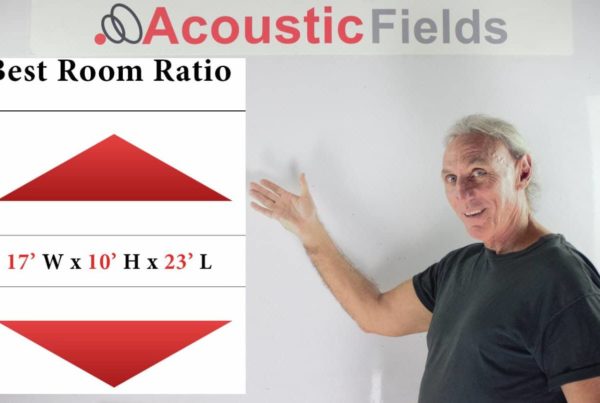In response to my “How a Diaphragmatic Absorber video works” video, which you can see further down this page, a YouTube subscriber wrote in to ask my opinion on VPR (or CBA) type absorbers? Okay well let’s get back to the basics of diaphragmatic absorption. What is it? It’s a pressure reactive device. So when sound pressure strikes the surface of the absorber, the front wall of the absorber slows the wave down a bit. It enters the inside of the cabinet, there’s a huge pressure change because of the internal cabinet fill material and more absorption occurs at different frequencies.
The depth of the cabinet determines how low it can absorb at but the internal cabinet fill determines how fast it absorbs within that domain. So if you use a steel plate as the front wall then that has a lot more density, so the more density means that it’ll slow the wave down faster. So you get more absorption in a smaller amount of space because you’re slowing the energy down.
Metal is good because it has good density and low frequency energy reacts to pressure, not air movement. So it doesn’t matter if it’s metal or solid or whatever. We’ve tried metal and we’ve tested metal and metal does work really good, it’s just very expensive. So we use two walls in ours but wood versus metal we all know that the density of metal is much greater in thinner thicknesses. So yeah it would be good to use an 8-inch plate or something like that and work it in.
You would then probably be able to shrink the size of the absorber because you would increase the density of the front end. So that might allow you to make the cabinet smaller and get the same kind of results, you just have to test it and see. But RPG Peter D’Antonio’s product, his Modex product, he gets a hundred percent absorption at 50 cycles and it’s only 4 and a half inches deep. He uses a metal plate on the front of his too. Ours go to 30-cycles but they’re not 4 and a half inches, they’re 8 and 10 inches. So we think that’s a fair trade-off, a few more inches in depth but a lot more lower frequency absorption and you know just the ability to do that.
So yeah diaphragmatic absorbers are all a ratio of three things, cabinet density, front wall density and internal cabinet fill material. So you have three variables you can kind of shuffle them around, increase one, decrease another one but you know there’s a balancing act that you try to achieve and get something that’s powerful in a small amount of space and that’s what we did. They’re heavy, you know diaphragmatic absorbers are heavy instruments because they work by reacting to pressure, can’t use foam. That won’t help you, so just depends on the density of the material.
In Summary
So I hope that helps you. If you have any questions at any time I am always on hand to help answer them. Leave them in the comments section or email me at info@acousticfields.com. If you would like to learn more about room acoustics please sign up for my free videos and ebook by joining the mailing list here. I send room tuning tips and things for you to test in your room every Wednesday. They are easy to follow and really help you enjoy more of your music. And if you would like your room acoustic issues analysed for free by me then please fill in the form here and I will be happy to take a look for you.
Thanks and speak soon
Dennis








This is unfortunately not how a VPR actually works, since a VPR doesn’t have a cavity. A VPR works by damping the plate mode resonances that appear in the absorber through the full-surface glueing of the plate to a damper (in this case the porous absorber). It’s not a diaphragmatic absorber as in a resonant cavity absorber. Actually a requirement for a VPR is the plate to be able to vibrate freely in all dimensions.
What is the frequency response?